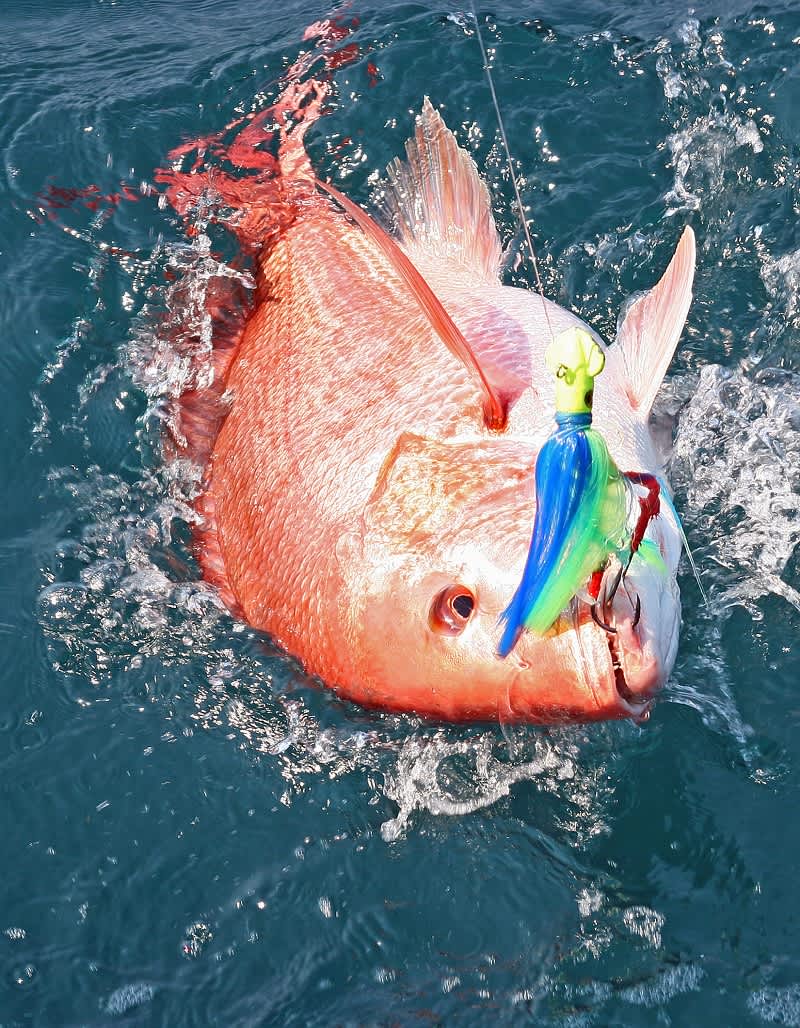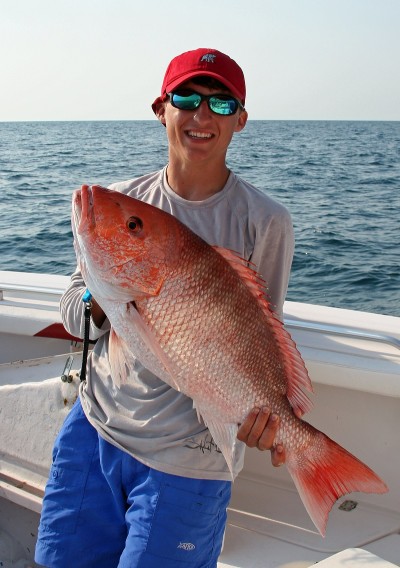Alabama Gets Another Crack at the Red Snapper
David Rainer 07.30.13

If projections by the National Marine Fisheries Service (NMFS) are fairly accurate, Alabama anglers may get another bite at the red snapper apple.
At a recent special meeting held in New Orleans, the Gulf of Mexico Fishery Management Council voted to add about 2.5 million pounds to the red snapper quota for 2013. That additional quota will be divided between the commercial and recreational sectors, so each sector will get a little more than a million pounds. With current projections, NMFS has tentatively scheduled a fall snapper season in October.
“The fall season in October could be two weeks, three weeks, maybe even a month,” said Bob Shipp, Gulf Council member and chairman of the Marine Sciences Department at the University of South Alabama (USA). “It all depends on how close we are to the projections for the June quota.”
Considering that projections in recent years were not very accurate and the recreational sector exceeded its quota the past two years, some may not be too optimistic. However, Shipp said NMFS appears to have learned from its mistakes.
“The Fisheries Service has adjusted their methods of projections, and they should be a lot better than before,” Shipp said during a break from weighing fish at the 80th annual Alabama Deep Sea Fishing Rodeo on Dauphin Island. “Another thing, we’re not going to go over this year because of the split season. If we were to come in way over, we just wouldn’t have a fall season. Overall, it would keep the recreational catch within its quota.”
The reason the additional quota was made available to the Gulf Council was the result of a new stock assessment that was completed earlier this year.
“It’s called a benchmark stock assessment, which means it starts from scratch with new data and new models,” Shipp said. “It took about two years to do it. Everybody knew the stocks were showing improvement, but we had to get that stock assessment under out belts. Personally, I think we could have gone another couple of million pounds, but there is some concern that recruitment (juvenile fish entering the population) is starting to fall off, and they didn’t want to cut back next year if the recruitment was poor. To me, all indications are that recruitment is fine. Nevertheless, that’s where we ended up.
“We did manage to raise the quota to 11 million pounds this year. Last year we had about 8.5 million pounds. The reason we went conservative was to level out the quotas for the next few years. I wanted 12 million pounds, but they (other members of the Gulf Council) wanted to keep the same quota for the next three years and not have to cut back if recruitment is down. We’ll get an update on the stocks next year, so there may be a little tweaking next year. My feeling is that the numbers are more likely to be up than down next year.”
Shipp and his staff have been conducting red snapper research off the Alabama coast for more than a decade and have witnessed the abundant red snapper that inhabit Alabama’s extensive artificial reef zones.
“As far as the snapper stocks are concerned, they look really, really healthy,” Shipp said. “In fact, some of our guys went out (on a research trip) after the season ended. They went to well-known spots, like the triple tanks, and they were loaded with fish of all year classes. Now I can’t speak for the rest of the Gulf, but things look really strong off of Alabama.”
Current red snapper quota allocations are 51 percent to the commercial sector and 49 percent to the recreational sector, which includes charter boats. The Gulf Council is currently working on a plan amendment that could possibly adjust the allocations.

“It’s something that’s probably not going to be decided for at least a year, but it’s definitely something on the table,” Shipp said. “Obviously, it’s a very, very contentious issue. It’s probably a little less contentious since the stocks are going up, but it’s still going to be a very difficult decision for the Gulf Council to make. The commercial guys are doing pretty well with their IFQ (individual fishing quota) system.”
Sean Powers, who sits on the Gulf Council’s Scientific and Statistical Committee along with USA Marine Sciences colleague Will Patterson, said the long-anticipated benchmark stock assessment was the key to consideration of a fall season in 2013.
“The new stock assessment confirmed what the fishermen are seeing,” Powers said. “There were more fish, they were getting larger and there were older fish in the population. The model is driven for one reason. It wants to see old fish in the population. It’s a long-lived species. It can live 50 years. What the model looks for is if there is enough snapper aged 15 and older. The reason is when a snapper is 15 it reaches maximum fecundity, or the number of eggs it can produce. So you want enough fish in that 15-year-old-plus category. That would be a 20-pound-plus fish. We’re seeing more and more of those fish.
“We’re also seeing less fishing mortality on the younger fish. Ten years ago, it was hard for a fish to make it to 4 or 5 years old. While we still don’t have enough of the 15-year-olds to say the fishery is not overfished, we have enough to say the fishery is headed in the right direction. Essentially, the age composition is what drives the model. While we see more fish and bigger fish, we want to see that age composition increase.”
Powers said if anglers can catch big fish without culling through smaller fish it would be the ideal situation.
“If fishermen can discard very little, that would maximize the fishery,” he said. “Biologically, the stock is definitely on the way to recovery. Most of the models suggest that in five or six years that stock may be fully recovered.”
Alabama Marine Resources Director Chris Blankenship said a fall season would mean a significant boost economically to the state.
“Any time the red snapper season is open, it’s good for the economy,” Blankenship said. “People are buying gas, bait and chartering boats. I think it makes people feel good that they can go out and catch some of those fish we’ve worked so hard to produce with our artificial reef program. I think in the future we can get more days. Whatever we get this fall is better than nothing. We’re really striving to get the most days possible for our people.”
Blankenship said Marine Resources supported Shipp at the New Orleans meeting when he made a motion to set the 2013 red snapper quota at 12.1 million pounds, although that motion failed.
“The rest of the Gulf Council wanted more of a buffer, because the recreational sector has caught more than their quota the past several years,” Blankenship said. “I just don’t feel confident that if we hold these fish back that we’re going to get these days in the future. The way things continue to change in the fishery and the management, I don’t want to put all our eggs in one basket. I want our people to be able to fish while we continue to work on other fronts, like regional management to gain additional days in the fishery.”

